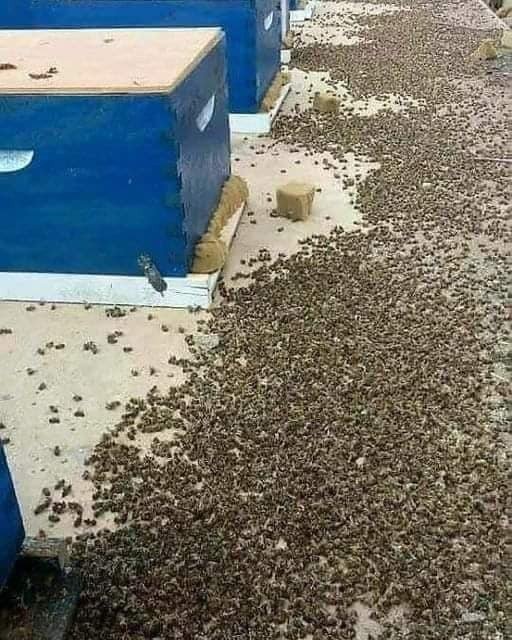Growing potatoes doesn’t require a large garden or even a traditional plot of land. With soil bags, you can cultivate a thriving potato crop in small spaces like balconies, patios, or even rooftops. This method is not only space-efficient but also reduces the risk of soil-borne diseases and makes harvesting a breeze. In this comprehensive guide, we’ll walk you through everything you need to know about growing potatoes in soil bags, from selecting the right materials to harvesting your homegrown spuds.
Why Grow Potatoes in Soil Bags?
Growing potatoes in soil bags is an innovative and practical solution for gardeners with limited space or poor soil conditions. Here are some of the benefits of this method:
- Space-Saving: Perfect for urban gardeners or those with small outdoor areas.
- Portability: Soil bags can be moved to optimize sunlight exposure.
- Disease Prevention: Using fresh soil reduces the risk of pests and diseases.
- Easy Harvesting: Simply dump the bag to collect your potatoes—no digging required!
- Cost-Effective: Soil bags are affordable and reusable.
What You’ll Need
Before you start, gather the following materials:
- Seed Potatoes: Choose certified disease-free seed potatoes from a reputable supplier.
- Soil Bags: Use grow bags specifically designed for gardening, or repurpose burlap sacks or heavy-duty garbage bags.
- Potting Mix: A well-draining, nutrient-rich soil mix is ideal.
- Fertilizer: A balanced fertilizer or compost to nourish your plants.
- Watering Can or Hose: For consistent watering.
- Sunny Location: Potatoes need at least 6-8 hours of sunlight daily.
Step 1: Preparing the Seed Potatoes
Start by preparing your seed potatoes for planting:
- Chit the Potatoes: Place the seed potatoes in a cool, bright spot for 2-4 weeks to encourage sprouting. This process, called “chitting,” helps speed up growth once planted.
- Cut Larger Potatoes: If your seed potatoes are large, cut them into smaller pieces, ensuring each piece has at least one or two eyes (sprouts).
- Dry the Cuttings: Allow the cut pieces to dry for a day or two to prevent rotting.
Step 2: Preparing the Soil Bags
Once your seed potatoes are ready, it’s time to prepare the soil bags:
- Choose the Right Bag: Ensure your bag has drainage holes to prevent waterlogging. If using a garbage bag, poke holes in the bottom.
- Add Soil: Fill the bag about one-third full with potting mix. Moisten the soil lightly to create a good environment for the roots.
Step 3: Planting the Potatoes
Now it’s time to plant your seed potatoes:
- Place the Seed Potatoes: Arrange 3-4 seed potato pieces on top of the soil, spacing them evenly. Ensure the eyes are facing upward.
- Cover with Soil: Add another 2-3 inches of soil to cover the potatoes. Water lightly to settle the soil.
Step 4: Caring for Your Potato Plants
Proper care is essential for a successful potato harvest. Follow these tips to keep your plants healthy:
- Watering: Keep the soil consistently moist but not waterlogged. Potatoes need about 1-2 inches of water per week.
- Hilling: As the plants grow, add more soil to cover the stems, leaving only the top few inches exposed. This encourages more tuber formation and prevents greening.
- Fertilizing: Apply a balanced fertilizer or compost every 3-4 weeks to provide essential nutrients.
- Sunlight: Ensure your bags are placed in a sunny location with at least 6-8 hours of direct sunlight daily.
Step 5: Monitoring for Pests and Diseases
While growing potatoes in soil bags reduces the risk of soil-borne diseases, you should still watch out for common pests and issues:
- Colorado Potato Beetles: Handpick these pests or use organic insecticides.
- Aphids: Spray with a mixture of water and mild soap to deter them.
- Blights: Ensure proper air circulation and avoid overwatering to prevent fungal diseases.
Step 6: Harvesting Your Potatoes
Harvesting potatoes from soil bags is incredibly easy:
- Check for Readiness: Potatoes are usually ready to harvest 2-3 weeks after the plants flower. For new potatoes, you can harvest earlier.
- Stop Watering: About a week before harvesting, stop watering to allow the soil to dry out slightly.
- Dump the Bag: Carefully tip the bag over and sift through the soil to collect your potatoes.
- Cure the Potatoes: Let the harvested potatoes dry in a cool, dark place for a few days to toughen their skins before storing.
Tips for Maximizing Your Potato Yield
- Choose the Right Variety: Select potato varieties suited to your climate and growing conditions.
- Use Large Bags: Larger bags allow for more soil and greater tuber production.
- Rotate Crops: If reusing soil bags, avoid planting potatoes in the same soil consecutively to prevent disease buildup.
- Experiment with Layers: Some gardeners plant potatoes in layers within the bag, adding soil and seed potatoes at different levels for a larger harvest.
Final Thoughts
Growing potatoes in soil bags is a simple, space-saving, and rewarding way to enjoy homegrown spuds. Whether you’re a seasoned gardener or a beginner, this method is accessible and adaptable to almost any environment. With proper care and attention, you’ll be rewarded with a bountiful harvest of fresh, flavorful potatoes.
So, grab some soil bags, seed potatoes, and get started on your potato-growing adventure. In just a few months, you’ll be enjoying the fruits—or rather, tubers—of your labor!



